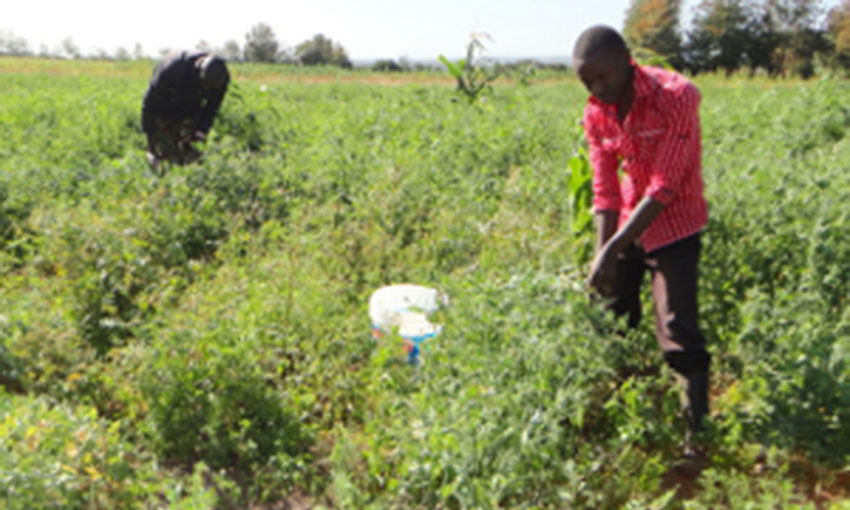
Image Source: ALIN
The youth are the future of food security in Kenya. Few young people see themselves practicing agriculture for income generation. In Ol-Moran Ward, Laikipia West Sub County, attempts to integrate the youth in agriculture have started to bear fruit due to increased interest in farming.
Peter Nderitu, 24, graduated last year with a Bachelor in Psychology from Egerton University. Instead of travelling to Nairobi to look for a white-collar job, he requested his parents to give him a two-acre piece of land in order to engage in agriculture.
Nderitu has been a frequent user of Ng’arua Maarifa Centre. He sought for information services at the Maarifa Centre about the different agricultural enterprise that he could possibly succeed in at Naibrom area.
Arid Lands Information Network (ALIN) founded the centre to enable farmers to access information related to agriculture, natural resource management, and climate change among others.
Researched information on growing green peas at the centre equipped him with knowledge that enabled him to start his project. Equipped with KES15,000, he started a journey that few graduate youths contemplate.
“I decided on green peas as I learned that they mature fast and also do well in this region. I initially targeted the December market but this was not possible as I planted late in November,” said Nderitu.
He noted that peas produce best yields and quality in moist growing conditions while the availability of well-drained soil in the area also favours them. Peas are one of the most nutritious leguminous vegetables. They contain phyto-nutrients, minerals, proteins, vitamins, and anti-oxidants.
He used six kilograms of seeds per acre thus investing KES1800. Nderitu alleged that the limited knowledge in best agricultural practices has affected his production, as he should have used around 10 kilograms per acre.
He used a spacing of 45 centimetres between plants and one metre between rows. Later on after researching at the Maarifa Centre, he realized that his spacing was not ideal. He is now planning to improve on the spacing during the next planting season.
Although he failed to stake the crops, he later learnt that staking is important for good quality fresh market peas. Due to the high cost of fertilizer, he has not been using the recommended quantity as he only used one bag of DAP in the two-acre farm.
“I have been taking my green peas to Sipili market. I had expected the peas to retail at KES100 per two kilogram tin but due to oversupply in Sipili, the price is not attractive as a two kilogram tin currently retails at KES50,” said Nderitu adding that lack of a stable market is a major hindrance. On a good day, he makes KES1000 by selling 40 kilograms of the peas.
He is now searching for alternative markets. Initially a buyer from Nairobi had promised to collect all the produce from his farm but as this took long, he decided to start selling the peas before they lost their nutritional value. He expects to continue harvesting for the next one month.
Pests and diseases particularly aphids have been a major setback. Despite spraying, the aphids still caused distortion and wilting of the plants thus leading to stunted and smaller pods and seeds. He had to spray the peas twice to get rid of the pests.
He said that the notion held by some youths that farming is old fashion and those involved in agriculture are normally peasants is misleading.
“I have learned a lot and I expect that I will be a better farmer during the next season. I realized that embracing new agricultural technologies can go a long way in ensuring that one succeeds as a farmer,” said Nderitu.
He believes that given the support from the Kenyan government in addressing challenges faced by youths in agriculture particularly difficulty in accessing credit facilities and markets can help entice more youths to embrace agriculture as a profession.
